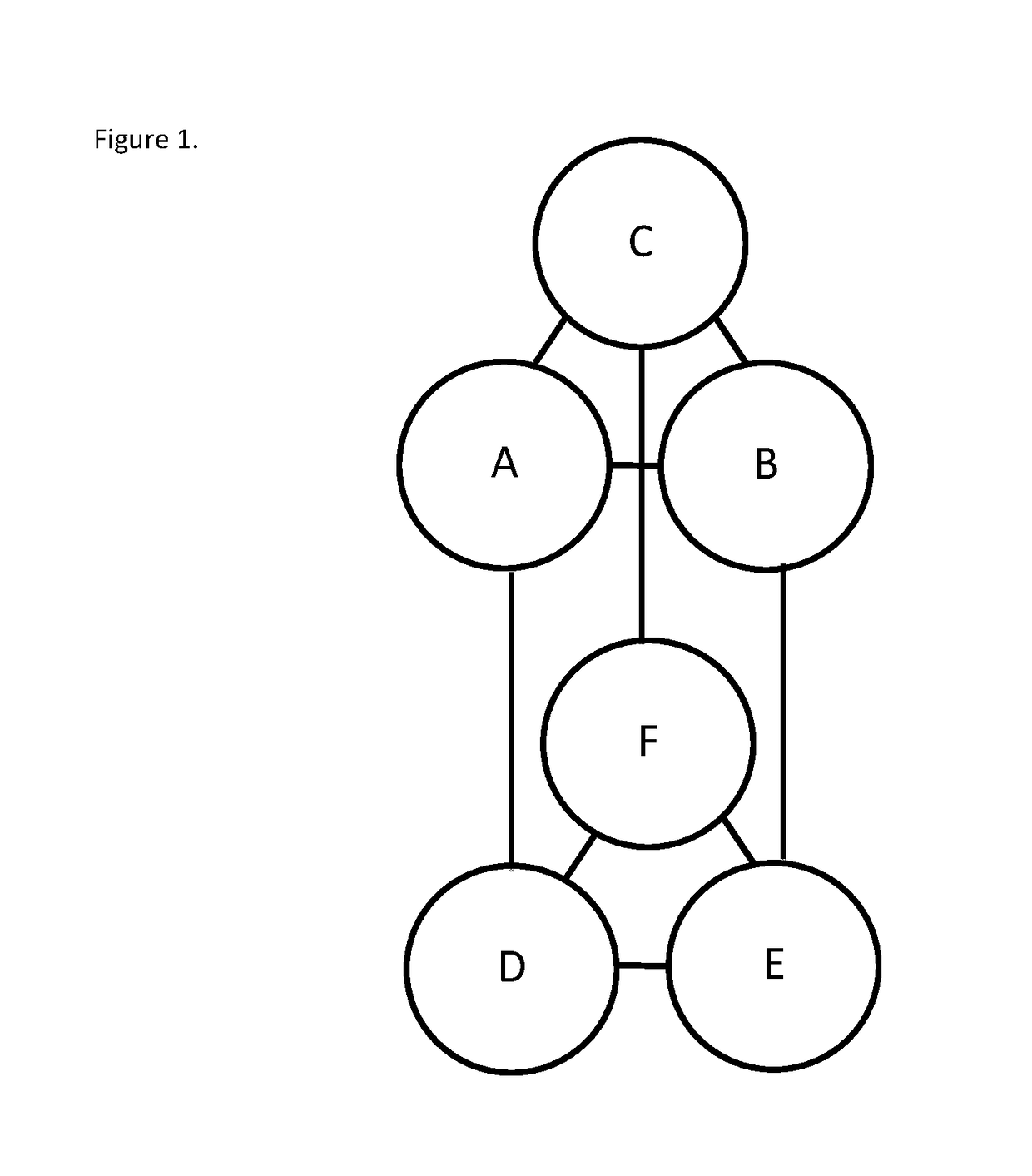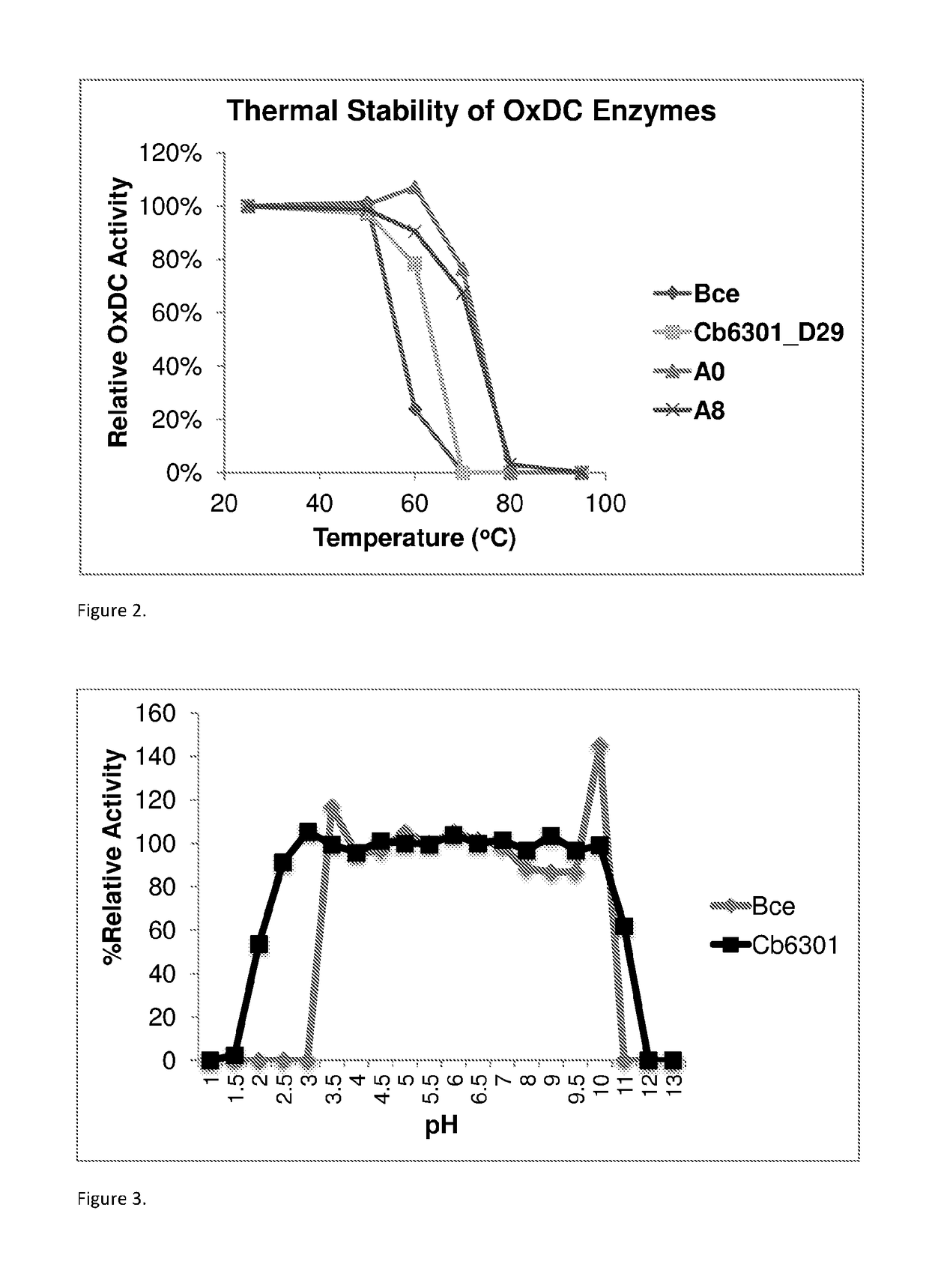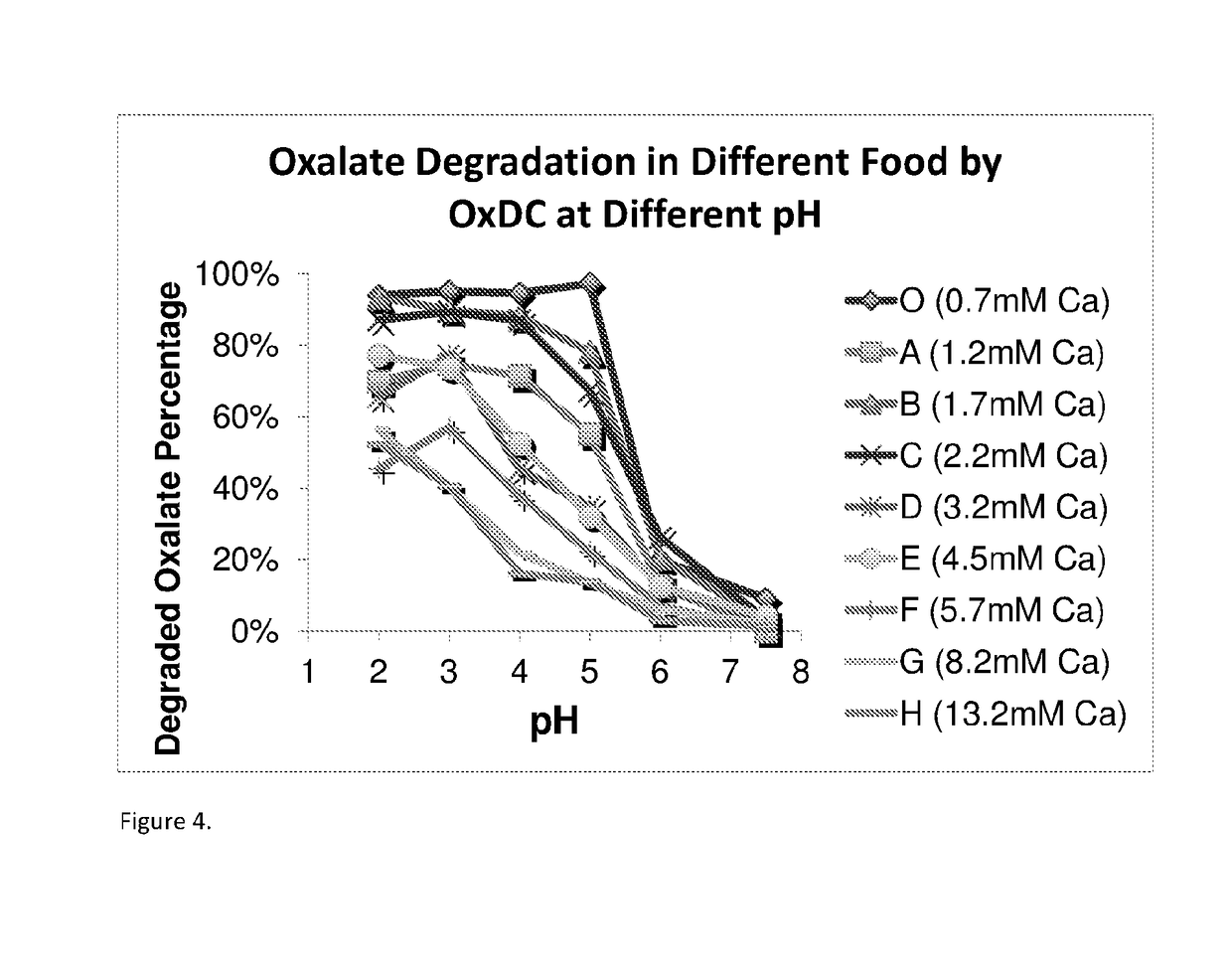High efficiency oxalate-degrading enzymes for degradation of insoluble and soluble oxalate
- Summary
- Abstract
- Description
- Claims
- Application Information
AI Technical Summary
Benefits of technology
Problems solved by technology
Method used
Image
Examples
example 1
[0253]Activity Testing:
[0254]Substrate removal (oxalate) and product formation (formate) is monitored to determine oxalate-degrading activity of the enzymes. The activity testing is performed in a 50 mM citrate or phosphate buffered solution at either pH 3 or pH 4 in buffered solutions containing 10 mM oxalate ion (C2O42−). For determining the pH activity profile of enzymes activity was determined from pH 1.5 to 8.0 using a combination of citrate and phosphate buffers (50 mM). Test sample is added to pre-heated reaction buffer and incubated at 37° C., shaking at 1100 rpm, for a range of set time points (t). The reaction is quenched at time t±5 seconds using 2.5 N H2SO4 at a 10% rate of acid to reaction mixture. The quenched reaction mixture is filtered and analyzed for formate concentration using an isocratic ion exclusion HPLC method. Specific activity is defined as μmol oxalate degraded per minute and mg of protein.
[0255]HPLC Method:
[0256]The quenched reaction mixture is filtered ...
example 2
[0257]Amino Acid Sequences of OxDC Enzymes
Oxalate decarboxylase [Bacillus cereus, Bce]SEQ ID NO: 1MKKRTVNEAGRNVPQPIRSDGAGAIDSGPRNVMRDIQNPNMLVPPITDAGLVPNLKFSFSDTSMILKQGGWSREITARELPVSTTIAGVNMSLTAGGVRELHWHKEAEWAYMLLGRARITAVDQNGRNFIADVGPGDLWYFPPGIPHSIQGLEHCEFLLVFDDGHFSDLSTLAISDWFAHTPKEVLSANFGVPESVFRSLPSDQVYIYQGEVPGSLESQEVQSPKGEVPLTFKHELLKQKPVKTPGGSVRIVDSTNFPISKTIAAALVEVEPGGMRELHWHPNNDEWQYYLTGEARMTVFLGNGTARTFDYRAGDVGYVPFATGHYIQNTGTETLWFLEMFRSNRFEDVSLNQWMALTPKEIVESNIHVGPQVMDSLRKEKWPVVKYPGFSYSPKSDEOxalate decarboxylase [Synechococcus elongates, Cb6301] full-length native sequence12SEQ ID NO: 2MQKKSKFFLGLLGVITCFVLIGSFCLPSLAQTQTWRSLSNVVWGKDLPAFSYPFSKTPLVDYDGGVTKQVGTYNFPVSKGMAGVYMTLKPGAIRELHWHANAAEWAYVIEGRTRVTLTNPDGQVQIADVDQGGLWYFPRGWGHSIEGIGPGTAKFLLVFNDGTFSEGATFSITDWLSHTPISWVQQNFGWSQDEVEKLPKKQVYISRYNPEVKPLDKTQSRNPKVSRIVLPYTHNLLAEKPRTSQAGNTLKLASAKEFPASFNMAGALLRLEPGAMRQLHWHPNADEWQYVLNGSMDLAVFASEGKASMSRLQKGDVGYVPKGYGHALRNSSDQPLDVLIVFNDGDYQSIDLNDWIMSNPNTVLDDVFQLSPQLLDKLPKESEILIPRSOxalate decarbo...
example 3
[0260]Expression, Fermentation and Extraction of Enzymes:
[0261]OxDC-A0 was produced by fermentation of Agrocybe aegerita (“A0”), induced by reducing pH to 3.0 and adding MnCl2 to a final concentration of 5 mM. The majority of the OxDC protein was present within the fungal cell, which was harvested by centrifugation. After resuspending the pellet in 50 mM phosphate buffer at pH 3 and homogenizing, the mixture was used for testing.
[0262]OxDC-A8 was produced by fermentation of Agrocybe aegerita (“A8”), induced by reducing pH to 3.0 and adding MnCl2 to a final concentration of 5 mM. The majority of OxDC protein was present within the culture supernatant, which was separated from the cells by centrifugation. The protein in the supernatant was purified and concentrated by ammonium sulfate precipitation and Tangential Flow Filtration (TFF). The final protein solution was in 50 mM citrate buffer at pH 3.
[0263]All of the enzymes and variants (including A8) were expressed recombinantly in con...
PUM
| Property | Measurement | Unit |
|---|---|---|
| Fraction | aaaaa | aaaaa |
| Molar density | aaaaa | aaaaa |
| Molar density | aaaaa | aaaaa |
Abstract
Description
Claims
Application Information
 Login to View More
Login to View More - R&D
- Intellectual Property
- Life Sciences
- Materials
- Tech Scout
- Unparalleled Data Quality
- Higher Quality Content
- 60% Fewer Hallucinations
Browse by: Latest US Patents, China's latest patents, Technical Efficacy Thesaurus, Application Domain, Technology Topic, Popular Technical Reports.
© 2025 PatSnap. All rights reserved.Legal|Privacy policy|Modern Slavery Act Transparency Statement|Sitemap|About US| Contact US: help@patsnap.com



